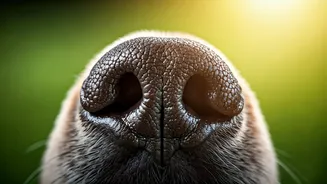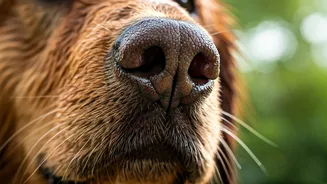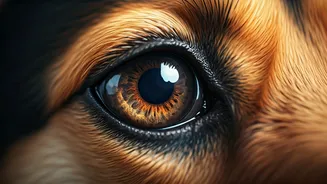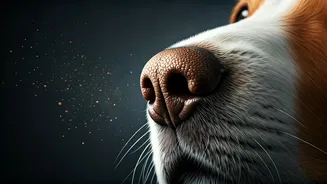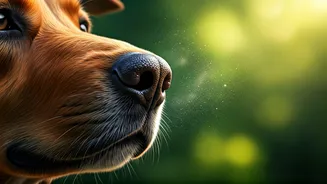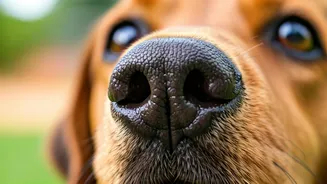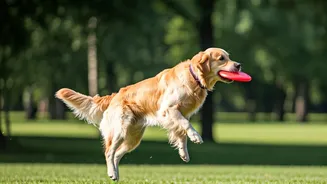Smell: Superpowers Activated
Dogs possess an incredible sense of smell, far surpassing our own. This superpowered ability is a cornerstone of their interaction with the world. Their
noses are equipped with millions more olfactory receptors than humans, allowing them to detect scents in incredibly low concentrations. This heightened sensitivity enables them to identify various things, including specific people or objects. Furthermore, a dog's ability to distinguish between smells is remarkable; they can differentiate between complex scent mixtures with ease, making them useful in tracking, search and rescue operations, and even detecting diseases. The dog's olfactory prowess stems from a unique combination of factors, including the size and complexity of their nasal cavity, which is dedicated to the processing of scent, making them the ultimate scent detectives.
Nose Prints: Unique Identifiers
Just as humans have unique fingerprints, every dog has a distinctive nose print. The ridges and patterns on a dog's nose are as individual as a human's fingerprint. This feature allows for positive identification of a dog. The nose print remains consistent throughout a dog's life, making it a reliable identifier, similar to how fingerprints are used for humans. Law enforcement and animal shelters sometimes use nose prints to identify lost or stolen dogs. The unique pattern, texture, and structure of a dog's nose pad help distinguish them from others, similar to how a fingerprint does for a human. The nose print can serve as an invaluable tool in reuniting pets with their owners or in legal situations requiring identification.
Vision: Color Limitations
While dogs possess excellent vision, their ability to see color differs from humans. Dogs see the world primarily in shades of blue, yellow, and gray. They lack the same range of color perception that humans have, especially in the red and green spectrum. This color vision limitation results from their eyes having only two types of cone cells, which are responsible for color perception, unlike humans, who have three types. Despite the different color perception, dogs have superior night vision, due to their eyes' ability to capture more light in low-light environments. The differences in color perception do not diminish the dog's ability to navigate and interact effectively with their surroundings; they have adapted to see the world in their unique color palette.
Eyelids: Extra Protection
Dogs have three eyelids, which offer an additional layer of protection and care for their eyes. Besides the upper and lower eyelids, they possess a third eyelid, the nictitating membrane or 'haw.' This third eyelid is a thin membrane that can sweep across the eye, providing lubrication and removing debris, and also helping to protect the cornea. The nictitating membrane is a remarkable adaptation, offering protection from dust, scratches, and other potential hazards. The third eyelid also has glands that produce tear film, keeping the eyes clean and moist. This unique feature enhances the dog's visual health and resilience.
Sweating: A Different Approach
Unlike humans, dogs do not primarily sweat through their skin. Instead, they cool down mainly by panting. The dog's body has a limited number of sweat glands in areas such as the paw pads, but the predominant method of heat regulation is panting. When a dog pants, it rapidly breathes through its mouth, allowing the moisture on the tongue and in the upper respiratory passages to evaporate. This evaporative cooling is effective in dissipating heat. This method is vital because it helps maintain the dog's body temperature. Understanding how dogs regulate their body temperature can help owners understand their dogs' needs better, especially during warm weather.
